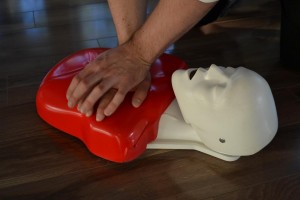There are numerous concerns as to what pointers must be used in choosing CPR vs Defibrillation. Undoubtedly, this is imperative for all first aiders as the two are directly interrelated. CPR, cardiac pulmonary resuscitation is a technique that allows medical professionals to restore the normal rhythm of the heart when the patient’s heart stops beating. There are two ways in which this may be accomplished: using hands-only CPR and the more conventional approach which takes up the provision of chest compressions in line with rescue breaths. CPR plays a fundamental role since it provides medical professionals with a window of opportunity to carry out more precise first aid procedures as may be required.
[youtube url=”https://www.youtube.com/watch?v=BJF9uMNMloI” width=”220″]This is one of the most important pointers for those who are looking at life saving skills from the angle of CPR vs Defibrillation. When performed on its own, CPR is not likely to save lives as it must be accompanied by first aid techniques pertinent to the specific condition. Most of the individuals who suffer sudden cardiac arrest experience something that is known as ventricular fibrillation, abbreviated VF. This leads to the rapid shuddering of the muscles of the heart. The result is irregular heartbeats that may sometimes be accompanied by lack of breathing.

This makes it clear why on its own, CPR cannot alter or normalize the heart’s rhythm so that the patient’s heart starts beating normally. At this point, it becomes vital to understand the CPR vs Defibrillation with a focus on the latter. Defibrillation refers to an electric shock that is administered to the body, and which restores the normal rhythm of the heart. Many people think that the purpose of this electric shock is to turn the heart on, but this is not how it works.
How exactly does defibrillation work?
Contrary to popular belief that defibrillation is like turning on a circuit breaker, this technique works by temporarily stopping the heart. During this moment, the cells tasked with pacesetting have an opportunity to reset a normal heart rhythm.
The question at this point then becomes, why exactly is it important to deal with CPR, bearing in mind that this does not handle the cause of cardiac arrest? The answer lies in the fact that as far as CPR vs Defibrillation is concerned, the former is an integral part of medical response to a cardiac emergency. What’s more, it helps to ensure that there is continual blood flow to the vital parts of the body so that oxygen supply does not cease. Defibrillation makes use of a gadget known as an AED- automatic external defibrillator. When this gadget is used on the patient, it allows for the full restoration of the heart’s normal beating. Studies have shown that the use of AEDs is more successful where CPR has been performed on the patient.
Conclusion
The interplay when you consider CPR vs Defibrillation is manifested to be very crucial to first aid procedures for cardiac arrests, and are skills that first aiders must possess.
